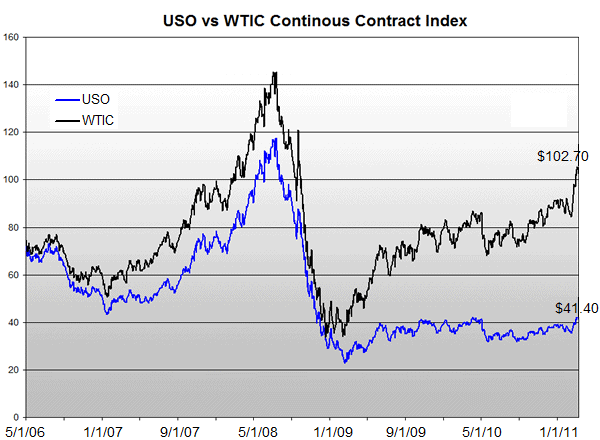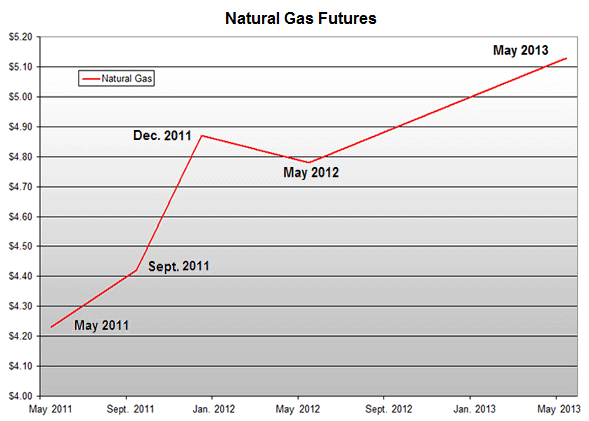These days, there is little doubt that commodities are in a bullish super cycle. While Wall Street is still pumping up highly overvalued stocks and Fed Chairman Ben Bernanke and his fellow central bankers continue cranking up their printing presses, astute investors are turning to real assets like precious metals, food and oil.
Even prior to the unprecedented monetary binge that began in 2008, the fundamental case for commodities was very compelling. Legendary investor Jim Rogers points out in his book, Hot Commodities, that half the world’s population didn’t partake in the last great commodity super cycle from the late 1960s through the mid-1980s.
During that time, the governments of China and India put a lid on any economic growth in the region. Today, China and India are full participants, and it's likely this new super cycle will blow up for another four to ten years -- minimum.
But as the commodities super cycle has heated up, mutual fund managers have gotten in on the action. According to the Wall Street Journal, commodity exchange-traded funds (ETFs) have grown from $3.9 billion in assets under management to an astounding $97.9 billion in assets under management, as of November 2010. Trading volumes have exploded, too. The daily trading volume for the United States Oil Fund (NYSE: USO), the world's largest oil ETF, has increased +400% from the first quarter of 2007 to the first quarter of 2011.
Obviously the mom and pop investors want to get in on the action, and ETFs are responding to the increased demand. But are retail investors being set up for disaster?
Why Funds Are a Lousy Way to Invest in Commodities
While experts may not agree on the best way to go long commodities, they certainly agree on the worst way -- any publicly traded mutual fund or ETF that holds futures contracts instead of physical commodities. And here's why:
There are certain commodities that can be stored fairly easily -- notably, precious metals. Funds like the SPDR Gold Trust (NYSE: GLD) and the iShares Silver Trust (NYSE: SLV) can buy physical gold or silver, put it in a vault, and assign a value to the holdings. And this is exactly what they do. These funds have done a respectable job of tracking the price movements of the underlying commodity.
But imagine something a little messier, like cattle, soybeans, sugar, oil or natural gas. Do you think there are fund managers excited about spending all day on a farm buying and selling cows? And feeding them? And cleaning up after them?
Instead of dealing directly with messy commodities, fund managers keep their hands clean by just buying and selling futures contracts instead. The problem is that the funds set up to trade futures contracts instead of physical commodities have done a miserable job of tracking their benchmark, i.e. the price of the underlying commodity.
To illustrate, let's take a look at the following chart of the USO versus its index, the West Texas Intermediate Crude (WTIC) Continuous Contract Index. If you were counting on USO to keep up with the latest spike in oil, you must be very disappointed:

In April of 2006, USO had its public offering with the goal of providing retail investors with direct access to the crude oil market. The object of the fund was to track the WTIC Continuous Contract Index. This graph clearly illustrates USO's inability to track the price of crude over a long period of time.
The gross underperformance of ETFs like USO can be boiled down to three features that aren't exactly highlighted by the funds' marketing departments:
1) Expenses
2) Roll Yield
3) Front-running
Let's look at each one in detail.
1) Expenses: Commodity ETFs and mutual funds typically charge management fees of around 1% of assets. Now, no one in their right mind would pay 1% for an equity fund that tracks an index (one of the world's most famous index funds, the Vanguard 500 Index Fund, charges a measly 0.18%). But commodity funds have realized that because they have no competition, they can charge exorbitant fees for what ends up as minimal management. The 'management' entails selling contracts as they near expiration and rolling the funds into new contracts.
But while management fees on these funds are typically excessive, they are hardly responsible for the underwhelming performance of the funds. That can be attributed to…
2) Roll Yield: As far as I can tell, “roll yield” is largely responsible for the severe underperformance of commodity funds. So let’s begin by defining roll yield.
Futures contracts allow investors to lock in a price. As a contract gets closer to the expiration date, the price in the market (the spot price) can be higher, lower or the same as the price in the futures contract. If the price in the futures contract is lower than the spot price as it gets closer to expiration, then the investor's contract has increased in value and he has a positive roll yield. But if the price in the futures contract is higher than the spot price, the investor's contract is worth less, and he has a negative roll yield. Let's look at an example.
Commodity contracts with different expirations do not trade at the same price. For example, as of 4/14/11, the futures for natural gas (NG) are trading as follows:

As you can see, the price of the contracts goes up considerably from where the current contract (the May 2011 contract) is trading. The spot price of natural gas would need to climb +20% by May 2013 in order for the May 2013 contract to be profitable.
This phenomenon is known in the world of commodity trading as 'contango.' Contango occurs whenever longer-term contracts are trading at a premium to the nearer-term contracts. These days, commodities typically trade in contango, although I admit I purposely picked one of the most extreme cases I could find to clearly illustrate the point.
The opposite of contango is 'backwardation.' When a commodity is in backwardation, near-term contracts are more expensive than longer-term contracts. Backwardation often occurs during shoulder season for energy commodities or right after a price spike brought on by an acute event. For example, natural gas traded in backwardation just after Hurricane Katrina. Near-term concerns about natural gas supplies drove up short-term prices, but longer-term prices remained fairly normal.
Back when the commodities markets were relatively small, they usually traded in backwardation. But now, for a number of different reasons beyond the scope of this article, a commodity usually trades in contango.
So how does this impact a commodity mutual fund or ETF?
Well, as long as the commodity is trading in contango, every time a fund is forced to sell expiring contracts to buy new contracts, they are selling low and buying high. In the example of natural gas, the price of gas would need to increase 19 cents by September’s expiration in order for any contract held by the United States Natural Gas Fund (NYSE: UNG), the most popular natural gas ETF, to be profitable. If the spot price of gas stays at its current level, UNG will theoretically lose 19 cents on any September contract it is holding. As you can imagine, this decay in value can really destroy an investment.
3) Front-running: Imagine that you know a certain stock is going to be added to the S&P 500 Index. The smart thing to do would be to buy as many shares as possible and wait for the increased demand to push up their price (because every index fund that tracks the S&P 500 would need to buy the stock for their portfolio). You might even buy the stock and short the S&P 500, creating an arbitrage profit opportunity.
Well, in the world of commodity funds, this event takes place every single month a commodity contract expires. And you can be certain that every person running pools of money in the commodity space is fully aware of this opportunity.
Every month, ETFs like USO have to go to the commodity markets to sell expiring oil contracts and buy new oil contracts. This creates an opportunity for investors to take the opposite side of these trades and create arbitrage opportunities. If I know that USO has to buy the July crude oil contract in the second half of June, and it also has to sell the June crude oil contract simultaneously, I can buy the July contract a few weeks early, knowing that a big buyer is coming to take it off my hands very soon. This is just one of many reasons why contracts will get so volatile just as a contract is expiring.
Now, if you're willing to oblige me, I'd like to go off on a little side rant: When commodity-based ETFs and mutual funds were first made public, they could invest in something called a “swap” instead of a futures contact. A swap contract eliminates much of the front-running opportunity because the execution price is the average of the spot price for the month instead of the price on the last day of the contract (like a futures contract). Long story short, it is easy to manipulate the price on a single day, but it is quite hard to do it for an entire month.
In 2006, the banking industry lobbied Congress and the SEC to make it illegal for retail funds to invest in swaps, which forced them to shift their exposure to futures contracts. Coincidentally (ahem), it became easier for the banks to manipulate the markets through front-running and other schemes.
Today, the combination of high fees, roll yield and front-running creates a barrier to profits that practically no commodity fund will ever be able to overcome. How else could crude oil be up over 50% since the inception of USO, while USO is down 50%? Knowing what makes these funds so dangerous can protect you from signing up for a losing strategy.
And now that you know why I consider ETFs to be the worst way to invest in commodities, I'll explain what I believe to be the best way in The Ultimate Guide to Profiting From the Commodity Super Cycle.



